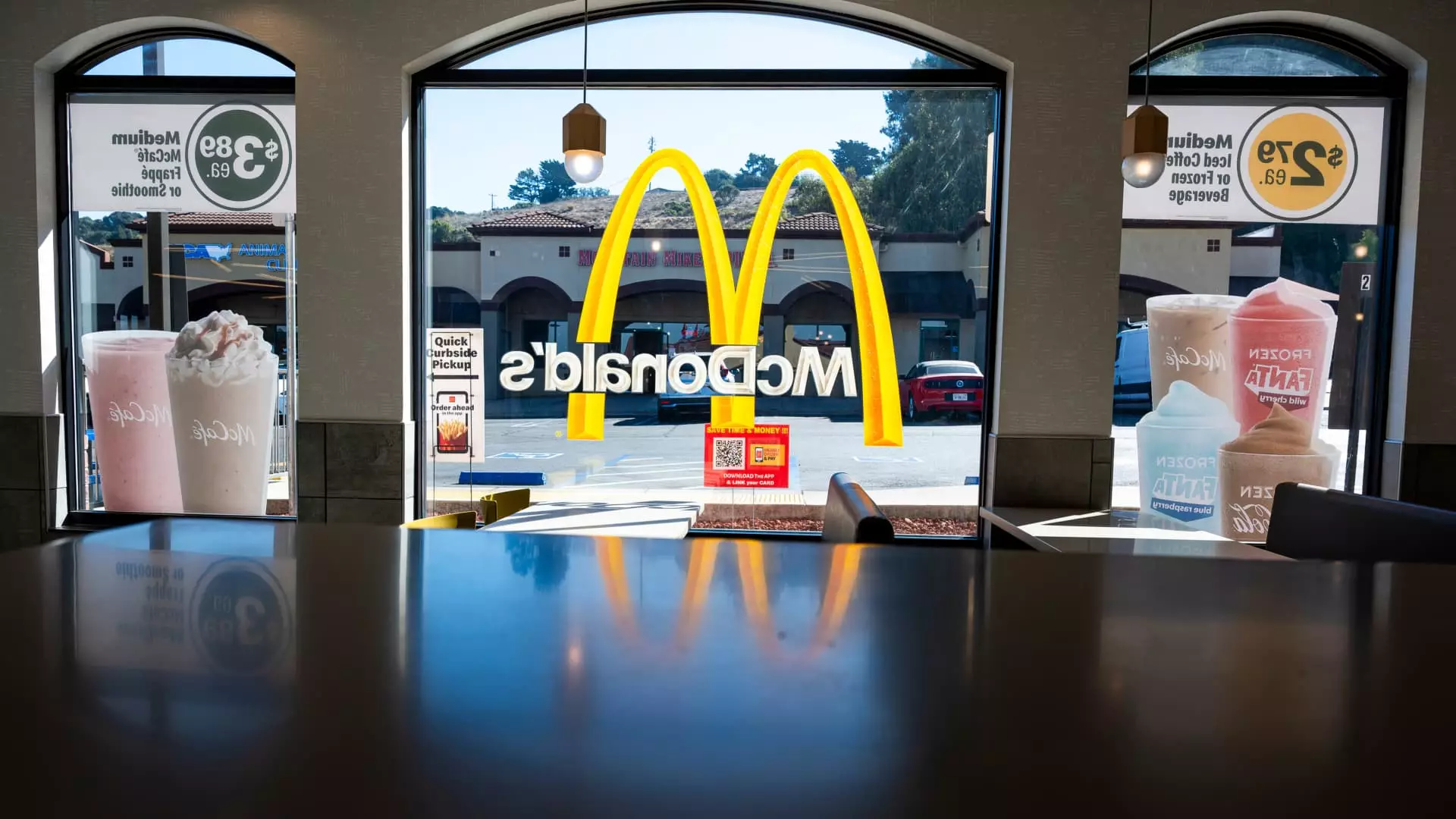As the world of food and service gears up for 2025, restaurant executives remain caught between optimism and caution. Following a tumultuous beginning to the year marked by severe weather and hesitant spending from consumers, the outlook shifts from hopeful to concerned. While some chains like Burger King and Popeyes express recovery in the final quarterly reports, the first month of the new year presents a different picture.
Restaurants had anticipated a strong fourth quarter to close out 2024, buoyed by value-driven offerings that lured customers away from home-cooked meals. Surprisingly, even established giants like McDonald’s reported a slight uptick in domestic traffic, despite facing a 1.4% decrease in U.S. same-store sales. However, this positive trend quickly dampened, with January revealing a statistic of slower growth than hoped. Wendy’s CFO, Kenneth Cook, aptly dubbed the situation a challenge as the industry wrestled with unpredictable weather and overall consumer hesitation to dine out.
Following a steeper increase in fast-food revenue of 4.9% in December, January’s 3.4% rise fell short of expectations. The data from Revenue Management Solutions indicates a troubling decline in consumer visits, particularly during breakfast and lunch hours, raising questions about the long-term sustainability of this apparent recovery.
The Consumer Mindset: A Shift Toward Value
Doug Fry, President of Subway U.S., captures the prevailing consumer sentiment perfectly. Amid uncertainty surrounding the economy, customers are no longer willing to compromise on quality or quantity in food purchases. Instead, they remain on the lookout for the best value for their dollars—priceless insight for restaurants aiming to entice patrons back in droves. This momentary caution underscores an evolving consumer landscape where brand loyalty may waver, and frugality takes center stage.
The uptick in foot traffic and sales at various chains hinges largely on a context of easy comparisons to the previous year’s sluggish performance. During a summer that typically signals robust growth, many chains experienced unsettling declines, reinforcing the unpredictability of market conditions. Restaurant Brands CFO Sami Siddiqui lends credence to the notion that with diminished traffic from prior years, businesses might herald improved metrics as warmer months approach.
The unanticipated cold snaps and wildfires that swept through regions like Los Angeles didn’t help the overall climate for restaurant sales. Chains including Chipotle Mexican Grill have felt the repercussions, estimating a dramatic 4% drop in January’s traffic due to weather events, coupled with timing intricacies of the New Year’s holiday. While the restaurant plans to rally in the latter half of the year, immediate forecasts remain bleak, contributing to investor apprehension reflected in stock valuations.
Interestingly, amidst concerns over price pressures linked to anticipated tariffs, many executives exhibit confidence regarding their supply chains. Chipotle and major fast-food outlets like Wendy’s and McDonald’s report a relatively modest expected impact from recent trading policies, indicating a hopeful outlook. Yet, consumers’ growing discontent regarding inflation and price rises points to an impending struggle that all industry players must confront.
Even as caution permeates the air, expectations begin to swirl about potential rebounds in the latter part of 2025. McDonald’s appears optimistic that it can reverse unfortunate trends linked to food safety scandals while simultaneously preparing for improving economic conditions. Conditional on these factors is a strong focus on low-income consumer welfare, indicating a responsive business strategy focused on tapping into vital segments of the market.
Starbucks presents a contrasting narrative, grappling with consecutive quarterly declines in same-store sales. This coffee chain finds itself at a crossroads, trailing other brands in consumer preference. With an indefinite outlook for fiscal 2025, Starbucks announces plans for restructuring and hopes for a gradual recovery in the second half of the fiscal year. By all accounts, it seems many chains will need to navigate various hurdles to restore the vibrancy they once enjoyed.
While certain indicators suggest that the restaurant industry might emerge into fertile ground as 2025 progresses, apprehension lingers in light of economic uncertainties and shifting consumer willingness. As industry players adapt to a continuously evolving marketplace, the critical focus on value may prove indispensable in rebuilding relationships with a wary public. The path ahead is anything but clear, but the lessons learned will undoubtedly shape the wellness of the restaurant landscape for years to come.


Leave a Reply